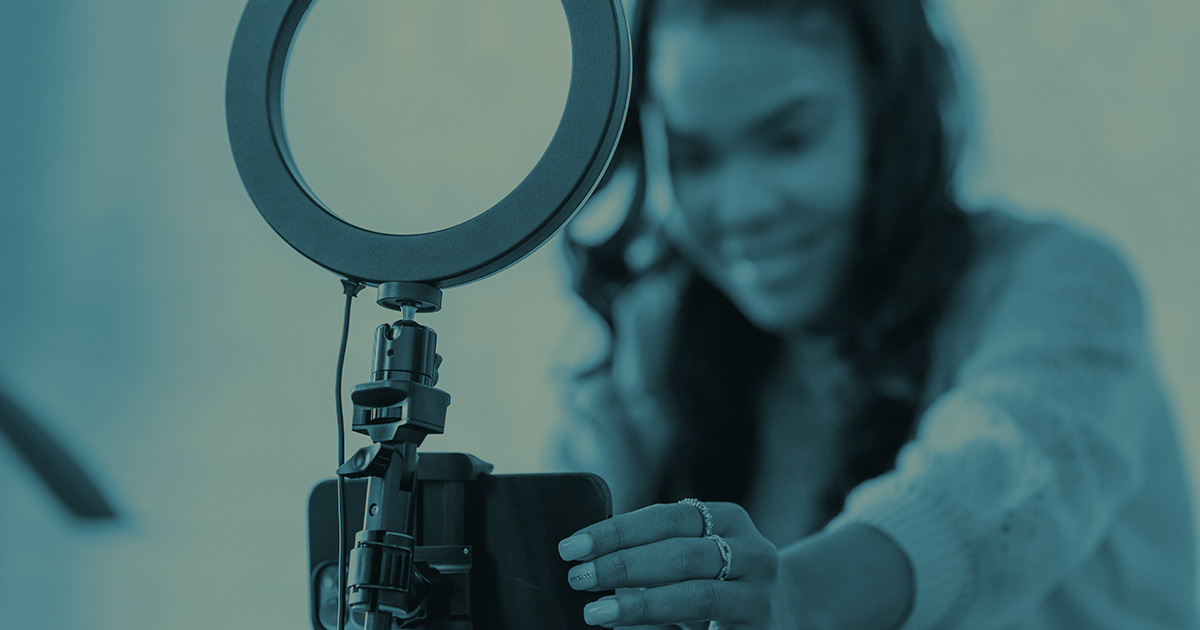2.28.20 |
The Value of Social Media Influencers
116 & West
Marketing your business, organization, or brand on social media is no easy task, especially when the market is ever-changing and social media use becomes more and more ubiquitous. Finding ways to represent your brand, message an elusive target audience (what’s up Gen Z?), and do it all convincingly is a tall order.
Since Facebook added business pages in 2007, it’s slowly but surely limited the amount of reach a business’s organic posts will have. A 2019 TrustInsights study found the median engagement from a Facebook brand post, unpaid, received was 0.0215%. To put simply: one out of every 4,647 people engage with a post.
Although the statistics are much better for Instagram (.47% engagement rate for an organic brand post), it’s pretty clear unpaid brand content doesn’t get much love on social media.
Over the past 5 years or so, businesses have been getting creative with their social media marketing. Instead of allowing an algorithm to be the primary distributor of organic and paid posts, businesses of all sizes have been utilizing actual people to help communicate their brand and market products and services. These people usually have some semblance of celebrity or brand equity from which a business can draw.
As more and more users join social media platforms, the number of people with a large following (influencers) has increased. However, social media users are also growing more aware of influencer advertising, and may not be as likely to engage. So, it takes a lot of front-end research to discover the right partner for your brand.
But once you do, you may find it’s exactly what your business needs. “Ultimately,” says our Integrated Media Director, Sean Winnett, “You can get an ungodly amount of value if you do it right. You can create a lot of loyal following. Your influencer might love your product and might keep posting about it for years.”
Finding and Evaluating Influencers
Winnett explains how important research is to finding and using social media influencers: “Your primary goal needs to be understanding the market. Sure you can do 30 minutes of research and come up with a list of 100 popular influencers, but whether anyone on that list is good for your brand is a different story.”
You can utilize influencer search tools, such as BuzzSumo and Awario, but those tools can only present data. For anything in-depth, you’ll have to do the digging. “Look deeply at an influencer’s voice, audience, and engagement,” says Winnett. “What is their photo quality and style? Does it match your brand? Look through their post history and pay attention to how they interact with their followers. The most comprehensive search will occur if you do the research yourself because you know your brand.”
It’s also important to understand the nuances between social media platforms. Each platform engages a particular demographic with a particular content style. If your business is aiming to reach teenage boys, for example, a YouTuber is a much better option than someone with a large Facebook following.
You’ll need to evaluate success a little differently on each platform as well. For example, the TrustInsights survey found the median engagement rate for an Instagram influencer was 1.5%. To the untrained eye, that might seem like very little. That engagement rate, however, is 157 times greater than the engagement rate on Facebook. To complicate this further, Instagram has removed any public-facing metrics, so you’ll have to have open lines of communication with your influencer to learn metrics. If you find your Instagram influencer has an engagement rate of 2%, you’ll know he or she is doing much better than average.
Depending on the platform, influencers may also help you market your business in fresh ways. For example, a YouTube influencer may only publish four times per year, but can provide your business video content, which may help diversify how you’re reaching your audience. On the other hand, if you find someone with a popular blog, there could be interesting opportunities for new affiliate or email strategies.
Alongside the platform, you also need to assess what kind of influencer you’re looking for. Are you looking for one individual with a huge following? If that’s the case, be prepared to shell out some cash. Or, are you looking for someone with a local following? Maybe you’re trying to find an influencer in a particular vertical, such as fitness or photography.
If, for example, you own a sporting goods store in Denver, CO, you’d be better served partnering with an influencer with a smaller, local following rather than one who has a larger, more national following. If you own a small or local business, an influencer who knows your community, it’s people, and the competition, can be hugely beneficial as an endorser of your brand.

Campaign and Structure
Ideally, influencer marketing is one part of your larger, integrated media strategy. Sure, you can pay someone to rep your brand or product on their channel, but without having some specifics in place, you may find it difficult to see the value.
For example, are you utilizing your influencer(s) to help you during a specific campaign? “Realistically,” says Winnett, “you should have a campaign or goal in mind. Working with an influencer doesn’t necessarily mean you have to constantly use him or her for a brand play.” Instead of always using them for “brand awareness,” influencers can be used to help you reach particular monetary goals, or new customer/client goals, or even drive traffic to a website or landing page.
If you are engaging your influencers to help you reach a specific KPI (key performance indicator), then set them up for success. Are you giving your influencer the right collateral and information about your business and brand? Do they know your relevant hashtags and account tags? Are they sending traffic to a landing page? You need to work with your influencer to ensure they’re helping you reach your goals.
You chose your influencers for a reason, so it’s also essential you give them their freedom in how they’re representing your brand or product. “That’s the point of using influencers,” says Winnett. “If you want them to say your words exactly, then do a paid ad. You want to tie your brand into their messaging in a way that feels organic and true to both your business and their personality.”
That’s what makes your original research so important. Someone might have a big following, but if the language and style of their posts don’t mesh with your brand, then you’re doing yourself a disservice.
Contracts and Compensation
“One of the more difficult parts of using influencers is figuring out how to compensate them,” says Winnett. “There is no standard influencer rate card. So, you may find yourself negotiating a lot. An influencer with 2k followers who is a perfect fit for your brand may cost more than someone with 10k followers. Your job is to feel great about your choice, no matter if you’re giving them free product, cash, store credit, or a mix.”
And while it may seem like a casual partnership, use a contract—especially if you’re going to pay your influencer. Contracts not only lay out a compensation plan, but also put into writing your expectations. “Use your contract to temper any expectation they might have for what you’re giving them,” says Winnett. “Also make sure to provide a clause about discretion and disclosure. They need to properly disclose they’re getting paid to talk about your brand or product. It’s the law.”
They key takeaway, according to Winnett, is that there are no right ways to compensate an influencer. “But, there are plenty of wrong ways.” To get the most out of your partnership, you treat the influencer as a valued part of your business. “You can get a lot of great value from non-paid partnerships if the value of the product is there and the brand and influencer are in alignment. However, you can’t rush the process or expect the world if you aren’t willing to pay for it.
“If your attitude toward an influencer is, ‘She’s lucky to work with us. She’s getting exposure,’ it’s doubtful the influencer will value your brand. No matter how your relationship works, the point is that you both benefit. It’s partnership in the truest sense,” says Winnett.
Contact Us
We know a thing or two about working with influencers. Let us know how we can help you! Drop us a message: whatsup@116andwest.com.

